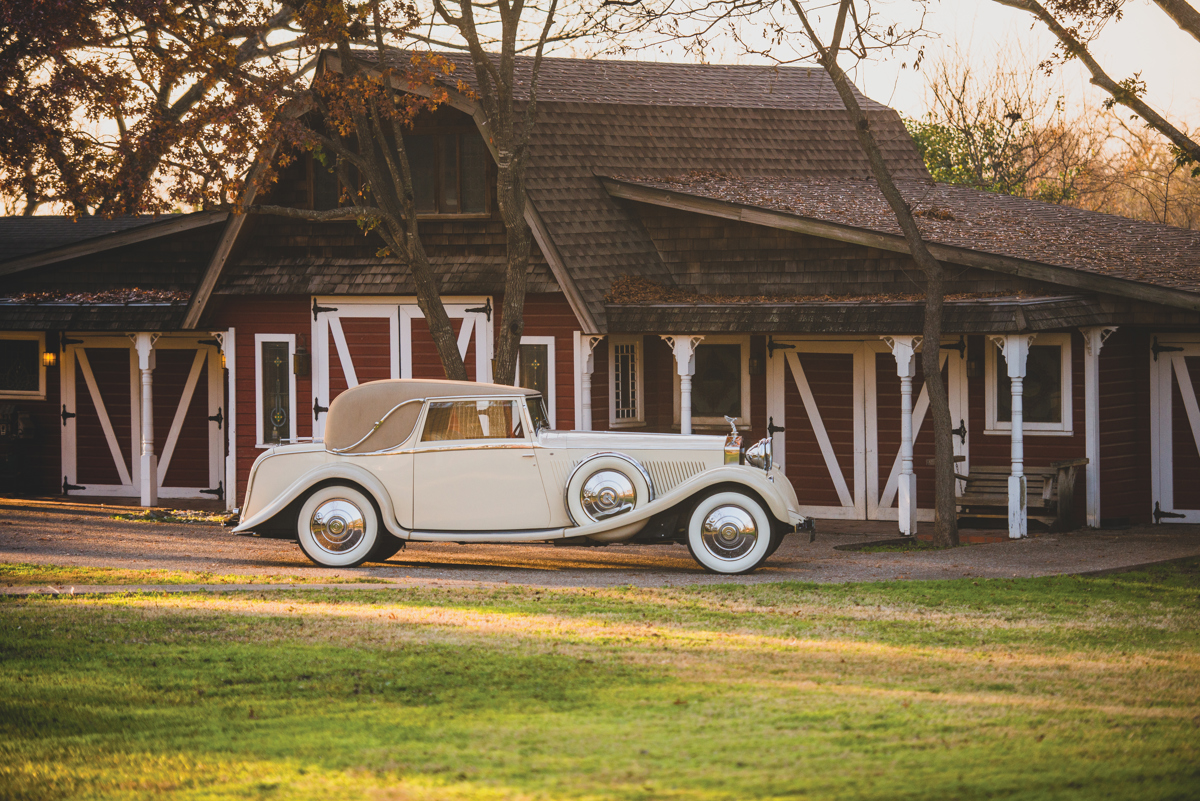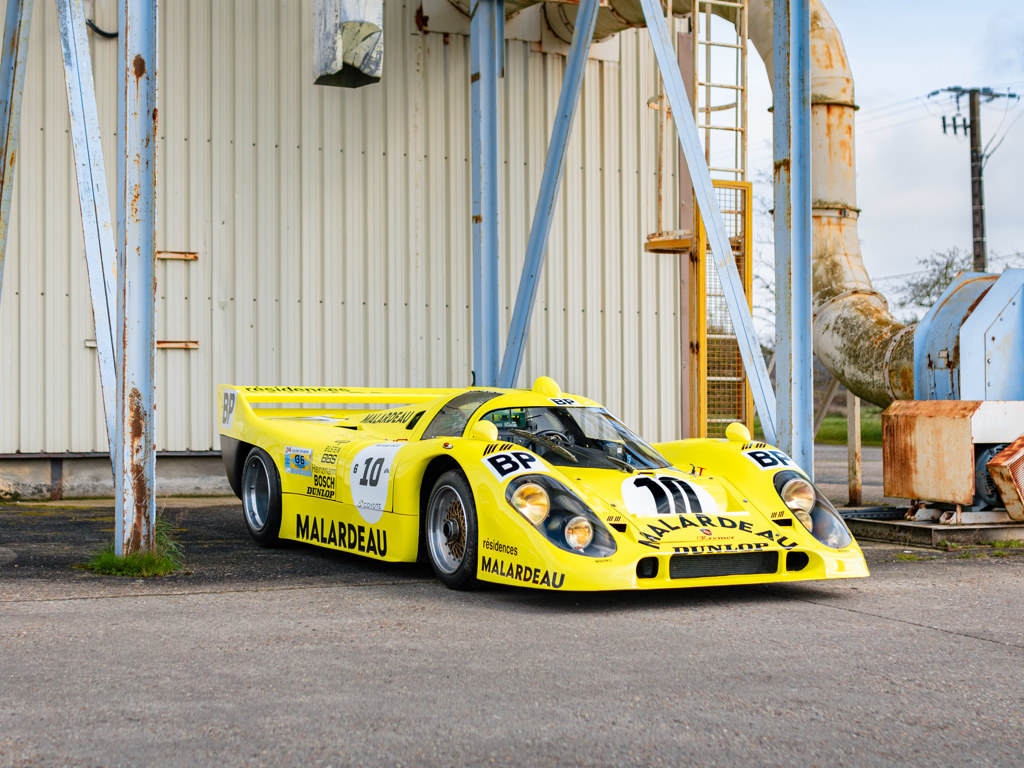RM Sotheby’s is proud to offer 22 superb examples of pre-war automobiles that exemplified the era’s finest in innovation and design.
Although the 1930s are often associated with a time of great economic hardship, the automotive industry continued to see refinement in the manufacturing processes and development of features that would become the standard for the future of the automobile. A wider diversity of engine types and displacements meant that vehicles were more powerful than ever before, with V-8, V-12, and even V-16 engines being utilized. The automatic transmission was introduced, allowing for smoother shifting, with some vehicles incorporating the gearshift on the steering column for convenience. Exterior design began to soften the hard lines of the vehicles of the 1920s, and low pressure rubber tires increased comfort for occupants while simultaneously improving handling characteristics. The 1934 Rolls-Royce Phantom II Continental Close-Coupled Saloon by Barker.
The 1934 Rolls-Royce Phantom II Continental Close-Coupled Saloon by Barker.
The influence of Streamline Moderne, a style of Art Deco design, is prevalent throughout the styling cues of vehicles of the period. Bodies became more streamlined—long, elegant sweeping shapes defined the bodies of automobiles throughout the 1930s, a contrast to the buggy-esque appearance of the majority of their predecessors. Curvaceous fenders with integrated footboards outlined smaller diameter wheels wrapped in low-pressure rubber tires, as opposed to hard-riding, high-pressure tires and larger spoked wheels. Rooflines plunged into trunks that were integrated into the bodies as opposed to sharp-edged rooflines and exterior-mounted trunks of the 1920s. Windscreens and grilles began to lean back, representing aerodynamic efficiency. Horizontal “speed lines” and symmetry further accentuated the appearance of speed. Bodies sat lower on their chassis, the appearance of brushed stainless steel and polished aluminum became more prevalent, and large drum-style headlights were replaced with sleek units that fit closely to the body, or were integrated into the body itself.
 The 1935 Auburn Eight Speedster.
The 1935 Auburn Eight Speedster.

The 1937 Cord 812 Supercharged Phaeton featuring retractable headlights.
To match the exterior styling cues of vehicles of the period, designers began to incorporate elements of the Art Deco and art moderne influence into the cockpits of new vehicles. Ornate decoration and bold colors indicative of the style began to emerge, with technical modern materials such as engine turned aluminum trim and glossy enamel being favored. Technical innovation allowed for conveniences such as heaters and radios to be implemented.
 Art Deco styling evident with repeating geometric shapes in the 1935 Auburn Eight Supercharged Phaeton.
Art Deco styling evident with repeating geometric shapes in the 1935 Auburn Eight Supercharged Phaeton.

Machine turned instrument cluster trim of the 1930 Duesenberg Model J ‘Sweep Panel’ Dual-Cowl Phaeton by LeBaron.
While design and styling were important during the period to be eye catching, emphasis was placed on improving quality mechanical aspects of the vehicles. Innovation such as automatic chokes, constant mesh and synchromesh transmissions for smooth shifting, hydraulic brakes, continual revisions to frames and suspension design all account for increased comfort and safety. Independent coil spring suspension was introduced in the mid-1930s—first at the front axle, and later for the rear wheels as well, vastly improving handling. E.L. Cord developed and debuted technology that would eventually change the course of the automotive industry, with the Cord L-29 becoming the first American-manufactured front-wheel-drive car.

The 1931 Cord L-29 Cabriolet, America’s first front-wheel-drive automobile.
Diversity in engine types allowed for power outputs that would far exceed the capabilities of those developed in the previous decade. The additional power and torque meant those lucky enough to own these vehicles were able to comfortably travel longer distances at higher speeds. Among the most prestigious models of the time, the 1934 Packard Twelve Convertible Sedan was equipped with a V-12 capable of 160 bhp. The 1930 Duesenberg Model J’s 420-cu. in. inline eight cylinder engine was capable of an astounding 265 hp, matching tremendous power with unparalleled elegance. In 1930, Cadillac unveiled the first production V-16 featuring a new hydraulic lifter designed by GM’s engineers to quiet the noisy nature of the overhead valve design. For the DV-32, Stutz designed a dual-overhead cam head with four valves per cylinder and deleted the previous twin ignition, and as a result was able to produce 156 hp from its 322-cu. in. eight-cylinder engine.

The elegant and immensely powerful 1930 Duesenberg Model J ‘Sweep Panel’ Dual-Cowl Phaeton.

The 1934 Packard Twelve Individual Custom Convertible Sedan by Dietrich.
For those who were financially unaffected by the Great Depression, these automobiles represented the pinnacle of technological advancement and set the benchmark for luxury travel. The focus on crafting bespoke automobiles would ultimately take a back seat as resources and labor were prioritized for military efforts as the Second World War began. Regardless, the influence of the automotive industry in the 1930s would leave an indelible mark on shaping the future aesthetic and technical aspects of the post-war automobile.



